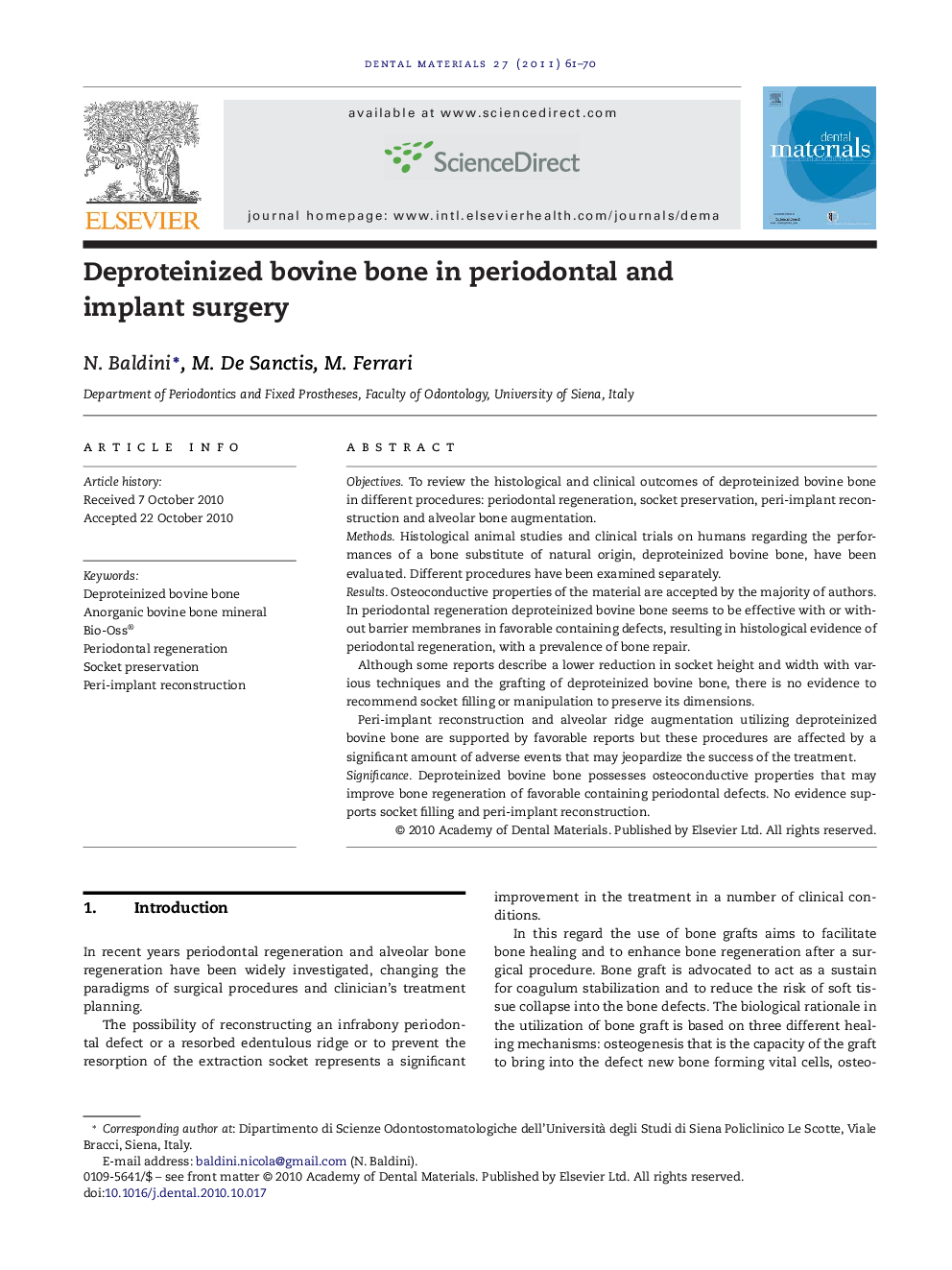| Article ID | Journal | Published Year | Pages | File Type |
|---|---|---|---|---|
| 1422501 | Dental Materials | 2011 | 10 Pages |
ObjectivesTo review the histological and clinical outcomes of deproteinized bovine bone in different procedures: periodontal regeneration, socket preservation, peri-implant reconstruction and alveolar bone augmentation.MethodsHistological animal studies and clinical trials on humans regarding the performances of a bone substitute of natural origin, deproteinized bovine bone, have been evaluated. Different procedures have been examined separately.ResultsOsteoconductive properties of the material are accepted by the majority of authors. In periodontal regeneration deproteinized bovine bone seems to be effective with or without barrier membranes in favorable containing defects, resulting in histological evidence of periodontal regeneration, with a prevalence of bone repair.Although some reports describe a lower reduction in socket height and width with various techniques and the grafting of deproteinized bovine bone, there is no evidence to recommend socket filling or manipulation to preserve its dimensions.Peri-implant reconstruction and alveolar ridge augmentation utilizing deproteinized bovine bone are supported by favorable reports but these procedures are affected by a significant amount of adverse events that may jeopardize the success of the treatment.SignificanceDeproteinized bovine bone possesses osteoconductive properties that may improve bone regeneration of favorable containing periodontal defects. No evidence supports socket filling and peri-implant reconstruction.
